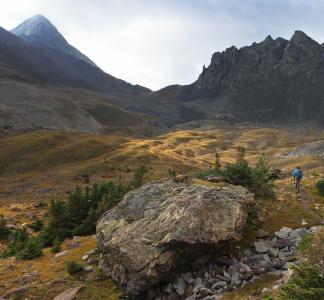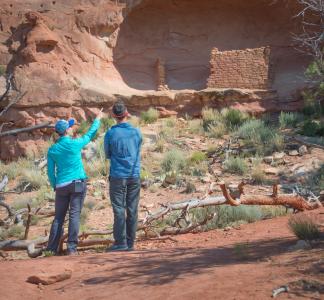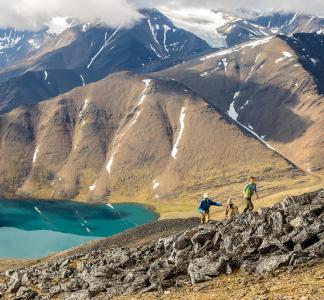Mason Cummings, TWS
The borderlands of the desert Southwest include unique wildlife and native plants that deserve protection
The border between Arizona and Mexico is a sensitive area ecologically, culturally and politically.
This region is the heart of one of the largest and most ecologically diverse wildlife corridors in all of North America. As climate change alters home ranges and migratory pathways for species such as jaguar, ocelot and Sonoran pronghorn, it becomes increasingly important to conserve large connected areas. This allows wildlife to adapt and survive.
Recent policies on border security include designs to build additional walls and grant authority to the Department of Homeland Security to waive bedrock environmental laws along the border. These policies present a threat to both border communities and wildlife. We can—and should—have both border security and environmental conservation.
Arizona’s borderlands are some of the most ecologically diverse areas and important wildlife corridors in America, hosting 93 endangered and threatened species, including jaguars, ocelots, Mexican gray wolves and cactus ferruginous pygmy-owls.
The threat
The borderlands in Arizona are under threat from cross-border and border enforcement activities. A wall between the U.S. and Mexico would severely impact public lands and wildlife movement and harm communities in the region.
The Sky Island region and the low desert areas to the west are among of the most biodiverse ecosystems on the continent, home to more than 450 species. Additionally, more than 700 species of birds, mammals and insects migrate through this area every year. Dividing this area and further fragmenting this habitat would be devastating to species movement and survival. For instance, the northern jaguar migration route would be cut off if a border wall is built.
Besides the severe environmental impacts of a proposed border wall on our public lands and wildlife, there are also serious impacts to individuals, families and border communities to consider. Many indigenous people of the Southwest would be threatened by efforts to abolish environmental protections along the border between U.S. and Mexico. These social impacts should not be ignored.
What we're doing
-
Protesting border walls
We are publicly opposing the construction of additional walls on the border between the U.S. and Mexico.
-
Advocating for the community
We are asking the government to recognize the very serious threats to individuals, families and border communities that a border wall poses.
-
Enforcing environmental laws
We are supporting the enforcement of bedrock environmental laws in the region.



